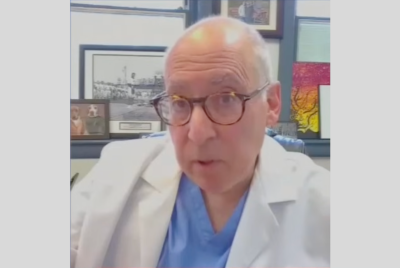4 facts to understand Asexuality better on Asexual Awareness Week
This annual event pushes for the inclusion and understanding of asexual-spectrum identities by educating the public on what being ace means.
Ace Week happens every October 23-29 and is a celebration and awareness campaign founded in 2010. This annual event pushes for the inclusion and understanding of asexual-spectrum identities by educating the public on what being ace means.
Asexuals are constantly fighting for visibility and acceptance, even amongst queer communities. Global initiatives have been implemented to spread information and spark discussion about ace identities.
Here are four important facts you should know to help you understand asexuals and the asexual experience:
Asexuals can still have romantic feelings for others.
Asexuals are defined to be "someone who does not experience sexual attraction or an intrinsic desire to have sexual relationships." A common abbreviation of the term asexual is ace, and ace people can still fall in love and have fulfilling, committed relationships with others. While asexuals may not experience sexual attraction, many still experience romantic attraction and may be comfortable with other forms of physical intimacy like kissing, cuddling and holding hands.
Asexuals can have sex.
Asexuality is a spectrum. While there are asexuals who are averse to sex and are repulsed by the thought of having sex themselves, this is not true for all aces. Some asexuals can choose to have sex with their partners to show affection. They might not have sexual urges themselves but they might be open to doing it with the people they love.
Demisexuals or people who do not experience sexual attraction unless they already feel a strong emotional connection with someone fall under the spectrum of asexuality. Grey asexuality is an umbrella term that describes people who feel sexual attraction but only occasionally. Each person's identity and sexual inclinations are personal and unique. Communication is key to understanding everybody, asexuals included.
There are tens of millions of asexual people.
While asexuals certainly lack visibility and representation, especially in popular media, there are still tons of people that identify with identities on the asexual spectrum. Although only a few researchers have looked into the global asexual population, it is estimated that around 1% of the population is asexual.
Asexuality isn't always a result of experiencing sexual trauma.
While childhood trauma can negatively impact people, it is wrong to assume that every asexual-identifying person must have been through something bad to make that choice. Dr. Cerankowski says. "Nothing makes somebody asexual any more than something makes somebody heterosexual, or gay or queer in any other way." Being asexual is based on your lack of sexual attraction and not why you feel that way. Asexuals should be free to have their own sexual preferences without fearing judgement from others.

© Copyright IBTimes 2025. All rights reserved.





















